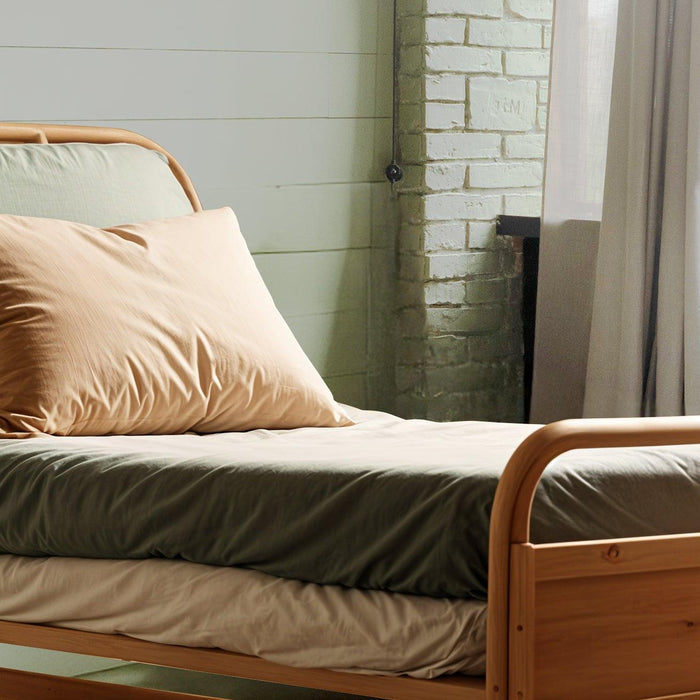
Search
Introducing the Medacure Bariatric Wings Wheelchair – an innovative mobility solution designed with comfort, versatility, and durability in mind. E...
View Full DetailsIntroducing the Medacure Junior Two-Button Folding Walker, the perfect mobility solution for individuals seeking independence and assistance in the...
View Full DetailsIntroducing the Medacure Steel Rollator - Your Reliable Mobility Companion! Constructed with a robust yet lightweight steel frame, the Medacure Ste...
View Full DetailsIntroducing Medacure's Platform Walker Attachment, the perfect accessory to enhance your mobility and comfort while using a walker. This innovative...
View Full DetailsKey Specs: Airline approved with detachable lithium battery LED headlight and rear brake light, provide safe travel No tools needed for quick asse...
View Full DetailsKey Specs: Simple control panel Sliding swivel seat with flip-up armrests Rear basket Weight capacity: 350lbs Highlights: The Metro Mobility ...
View Full DetailsKey Specs: High-performance operation and easy disassembly Sliding swivel seat with flip-up armrests Very comfortable Seat Weight capacity: 300 lb...
View Full DetailsKey Specs: Front & Rear LED Light 300W Powerful Motor 9 inches front & rear solid tyres Simple control panel Highlights: Introducing ...
View Full DetailsKey Specs: High-performance operation and easy disassembly Sliding swivel seat with flip-up armrests Detachable basket Weight capacity: 120kg(265l...
View Full DetailsKey Specs: High-performance operation and easy disassembly Sliding swivel seat with flip-up armrests 300W Powerful Motor Weight capacity: 120kg(2...
View Full DetailsKey Specs: Made of high-strength aluminum components Lightweight Load Capacity: 1000 lbs Heavy-duty ramps can hold extreme weights up to 1,000....
View Full DetailsKey Specs: Made of high-strength aluminum components Lightweight Load Capacity: 1000 lbs Heavy-duty ramps can hold extreme weights up to 1,000....
View Full DetailsKey Specs: Made of high-strength aluminum components Lightweight Load Capacity: 1000 lbs Heavy-duty ramps can hold extreme weights up to 1,000....
View Full DetailsKey Specs: Made of high-strength aluminum components Lightweight Load Capacity: 1000 lbs Heavy-duty ramps can hold extreme weights up to 1,000....
View Full DetailsKey Specs: Made of rubber Easy to clean For indoor or outdoor use Rampit USA rubber threshold ramps provide safe and easy access to areas with ...
View Full DetailsFeatures Include: 4 wide feet make it sturdy and stable Dual lifting actuators for strength and reliability Easy to use wired remote Works with 16...
View Full DetailsKey Specs Easy to release drop-arm Comes complete with 12 qt commode bucket Heavy duty steel tubing Weight Capacity: 1000 lbs The Medacure Bari...
View Full DetailsKey Specs Easy to release arm mechanism Comes complete with 12 qt commode bucket Heavy duty steel tubing Weight Capacity: 650 lbs Introducing M...
View Full DetailsAre you or a loved one in need of a reliable and versatile bedside commode? Look no further! Medacure's Folding Bedside Commode is the perfect blen...
View Full DetailsIntroducing the Deluxe Aluminum Shower and Tub Chair from Medacure, the perfect blend of comfort, safety, and durability designed to enhance your b...
View Full DetailsKey Specs: 100% Nitrile Comfortable and Latex-Free Multi-Purpose Introducing FifthPulse Nitrile Gloves: Your Trusted Companion in Medical Care...
View Full DetailsKey Specs: 100% Nitrile Comfortable and Latex-Free Multi-Purpose Introducing FifthPulse Nitrile Gloves: Your Trusted Companion in Medical Care...
View Full DetailsKey Specs 4 Color coded straps for easy position adjustment Back straps for easier transfer assistance 660 lb. weight capacity Introducing Meda...
View Full DetailsKey Specs 4 Color coded straps for easy position adjustment Back straps for easier transfer assistance 660 lb. weight capacity Introducing Meda...
View Full DetailsKey Specs 4 Color coded straps for easy position adjustment Back straps for easier transfer assistance 660 lb. weight capacity Introducing Meda...
View Full Details


I have not been using them for a long time, but when you have bladder leakage, dependable is the best thing in the world. I am grateful for your product, thank you.
These masks are very comfortable and also different mood colors. Better than the plain black or hospital blue masks. Need more designs.
This mattress is excellent for anyone who has a special needs individual that isn't potty trained or is prone to accidents. It's makes clean up a breeze and they get a good quality mattress with great support. I highly recommend this mattress for anyone who may have incontinent issues.
Love my mask they are so soft and after a 12 hour shift my ears don't hurt .thanks for good quality service and product
The person i bought those for has passed away. Its been returned
The overbed table is just what I needed to elevate my phone, alarm clock and C-Pap
machine at the same height at the side of
my bed. I could not find an end table high
enough or large enough. It is worth getting.
Excellent product, works very well.
Bought this for my disabled husband. It works great. Very stable and easy to fold.
